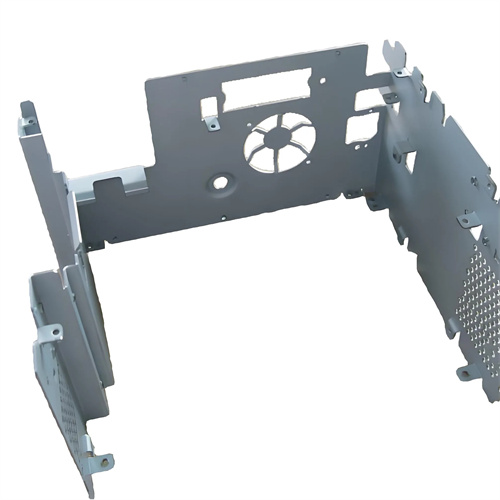Hot rolled tin bronze plate
Hot-rolled tin bronze sheet is an alloy sheet made from a copper matrix with added tin (typically containing 3%-14%). Produced through a hot-rolling process, it exhibits excellent wear resistance, corrosion resistance, thermal conductivity, and mechanical properties, making it widely used in machinery manufacturing, aerospace, and marine engineering. Tin bronze sheet with varying tin contents exhibits distinct properties. Sheets with lower tin contents (3%-5%) exhibit greater plasticity and are suitable for stamping, while sheets with higher tin contents (8%-14%) exhibit greater strength and hardness, excellent wear resistance, and are suitable for heavy-loaded friction components. Hot-rolled tin bronze sheet typically ranges from 5-50mm thick, with widths up to 1200mm and lengths up to 3000mm. Compared to cold-rolled tin bronze sheet, its grain structure is coarser and more uniform, allowing it to withstand greater impact forces and loads.

The production process of hot-rolled tin bronze sheet requires precise control of alloy composition and rolling parameters. First, electrolytic copper and tin ingots are placed in a medium-frequency induction furnace for smelting at a controlled temperature of 1100-1200°C. Small amounts of zinc, lead, and other elements are added as needed to improve properties (for example, lead can enhance cutting performance). Nitrogen is introduced during the smelting process to prevent oxidation of the molten copper and ensure a uniform alloy composition (tin content deviation ≤ 0.2%). The molten copper is then cast into ingots 100-200mm thick. These ingots undergo homogenization annealing (600-700°C for 4-6 hours) to eliminate casting stress and composition segregation. During the hot rolling stage, the ingots are heated to 750-850°C and gradually thinned to the target thickness through multiple hot rolling passes. Each pass has a reduction of 15%-25% and a rolling speed of 1-3 m/min to prevent cracks caused by work hardening. After hot rolling, the plates are water quenched, straightened, trimmed, and pickled to remove scale. Finally, they undergo hardness testing (Brinell hardness HB60-120) and wear resistance testing to ensure product quality.

In the machinery manufacturing sector, hot-rolled tin bronze sheet is a core material for wear-resistant components. High-tin bronze sheet (10%-12% tin content) is used in the bearings and bushings of machine tool spindles. Its excellent wear resistance reduces frictional losses during spindle operation. A precision machine tool manufacturer has extended its spindle service life to over 15,000 hours by adopting this material. Hydraulic press pistons and cylinder liners are made of tin bronze sheet with a 6%-8% tin content, which maintains excellent sealing and wear resistance under high pressure (≥30 MPa). Test data from a hydraulic equipment manufacturer shows that components using tin bronze sheet have a 40% lower failure rate. In printing machinery, low-tin bronze sheet (3%-5% tin content) is used for the lining of rollers. Its excellent plasticity ensures a tight fit, while its thermal conductivity aids in heat dissipation, resulting in an 8°C reduction in operating temperature for equipment at one printing plant.

Hot-rolled tin bronze sheet boasts significant advantages in aerospace and marine engineering. Aircraft landing gear’s shock-absorbing bushings are made of high-strength tin bronze sheet, capable of withstanding the immense impact forces of takeoff and landing while also exhibiting excellent corrosion resistance. One airline has extended its landing gear maintenance cycle to 800 flight hours. Bearings and bushings in ship propulsion systems are made of lead-containing tin bronze sheet (containing 2%-3% lead), which offers long-term, stable operation in seawater environments and resists seawater corrosion and microbial adhesion. The use of this material in the propulsion system of an ocean-going freighter has extended the bearing replacement cycle to five years. In spacecraft attitude control systems, the ring gears of small transmission gears are machined from hot-rolled tin bronze sheet, whose excellent mechanical properties ensure gear transmission accuracy (deviation ≤ 0.01mm).

With the development of high-end equipment manufacturing, the performance of hot-rolled tin bronze sheet is constantly being optimized. Manufacturers have developed ultrafine-grained tin bronze sheet. By controlling the rolling temperature and cooling rate, the grain size is refined to below 5μm, increasing wear resistance by 20%, making it suitable for high-speed mechanical components. For extreme environments, low-temperature-resistant tin bronze sheet has been developed, which maintains good toughness (impact energy ≥ 20J) even in a liquid nitrogen environment at -196°C, expanding its application in low-temperature equipment. In terms of environmental protection, lead-free tin bronze sheet (lead content ≤ 0.01%) has been developed, which complies with EU RoHS standards and is suitable for food machinery and medical equipment. In the future, with the upgrading of intelligent manufacturing and high-end equipment, hot-rolled tin bronze sheet will develop towards higher performance and more precise specifications, providing more reliable material support for various industries.
